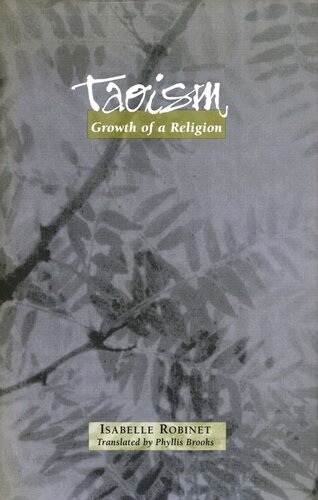

Most ebook files are in PDF format, so you can easily read them using various software such as Foxit Reader or directly on the Google Chrome browser.
Some ebook files are released by publishers in other formats such as .awz, .mobi, .epub, .fb2, etc. You may need to install specific software to read these formats on mobile/PC, such as Calibre.
Please read the tutorial at this link: https://ebookbell.com/faq
We offer FREE conversion to the popular formats you request; however, this may take some time. Therefore, right after payment, please email us, and we will try to provide the service as quickly as possible.
For some exceptional file formats or broken links (if any), please refrain from opening any disputes. Instead, email us first, and we will try to assist within a maximum of 6 hours.
EbookBell Team

4.1
80 reviewsThis is a survey of the history of Taoism from approximately the third century B.C. to the fourteenth century A.D. For many years, it was customary to divide Taoism into "philosophical Taoism" and "religious Taoism." The author has long argued that this is a false division and that "religious" Taoism is simply the practice of "philosophical" Taoism. She sees Taoism as foremost a religion, and the present work traces the development of Taoism up to the point it reached its mature form (which remains intact today, albeit with modern innovations). The main aim of this history of Taoism is to trace the major lines of its doctrinal evolution, showing the coherence of its development, the wide varieties of factors that came into play over a long period of disconnected eras, the constant absorptions of outside contributions, and the progress that integrates them. The author shows how certain recurrent themes are treated in different ways in different eras and different sects. Among these themes are the Ultimate Truth, immortality, the Sage, the genesis and the end of the world, retribution for good and evil acts, representations of heavens and hells, and the connections between life and the spirit, between life and death, between man and society, and between mystical experience and the social form of religion. The plan of the book is chronological, but the chronology is somewhat fluid given the way Taoism evolved; as it assimilated new features in the course of its growth, it never ceased to continue to develop the old ones. Thus the Celestial Masters sect, which is chronologically the first to attain a structure, is treated at the outset of the book though it exists down to our day, and the Shangqing tradition took shape in the fourth century though its glory years were under the Tang (618-907).